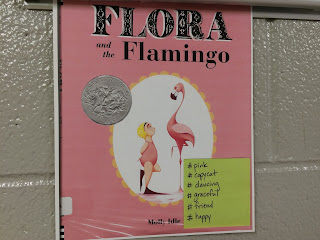blog post written by:
Sarah Svarda
Have you ever read a book that made you want to take action immediately? When I finished A Long Walk to Water, the first thing I did was look up the website for Water For South Sudan. The second thing I did was follow Linda Sue Park and Salva Dut on Twitter because I wanted to know about anything and everything that either of them had to share with the world. As Linda Sue Park states in her TedX Talk (below), books like A Long Walk to Water do two things for the reader:
1. Reading the book provides practice at life for the reader. In this case, the story helps the reader experience unfairness. The reader learns how to deal with unfair experiences through examples from the characters. In a Long Walk to Water, Salva's response to the unfairness he faced was with hope and perseverance. As the students read, they will learn to face unfairness in the same way through Salva's example.
2. The reader experiences and develops their own empathy for others as they read. This empathy encourages engagement for that reader.
This outcome of empathy and the need for engagement is the perfect opportunity to let your children become engaged with the story outside of the walls of the school building. Read A Long Walk to Water with your children. Research and brainstorm ways that your children can help the families and children have clean water in South Sudan. Write. This is the perfect opportunity to have your children write opinion/argument pieces encouraging others to help their cause. You will have automatic engagement because the students can't wait to help.
Here's what the book has already inspired as stated by Linda Sue Park in her TedX video (below):
1. To date, readers of A Long Walk to Water have raised more than one million dollars for Water For South Sudan.
2. Sixty wells have been dug with that one million dollars.
3. Each of the sixty wells can serve 2,000 people.
Do the math.
4. When children no longer have to spend the whole day walking to get water for their families, they can go to school!
Linda Sue Park shares the following books in her TedX Talk which are also great mentor texts to inspire your students to take action and write opinion/argument pieces in the classroom:
Have your students read Wonder by R.J. Palacio and write opinion/argument pieces about bullying. Check out the Kind Classroom Challenge as well. Our fifth grade reading teacher's classroom is a certified "Kind" classroom. She can't say enough about how the kids have become involved and taken on the ownership of treating each other with respect and kindness.
Crenshaw is a bittersweet story that shares the reality of homelessness that so many of our students face on a daily basis. After reading Crenshaw, your students will be inspired to share the statistics of homelessness in school-aged children and to educate their peers about what can be done to help.
Do you have any texts that you've read to your class that inspire opinion writing? If so, please share them in the comments below.



























